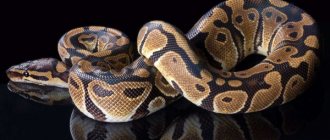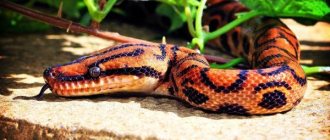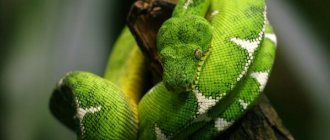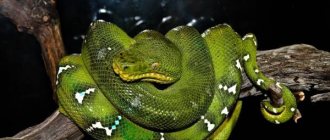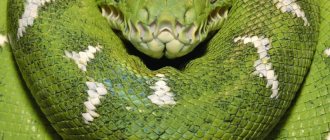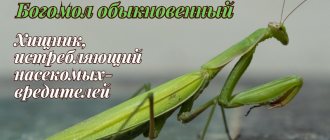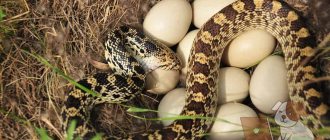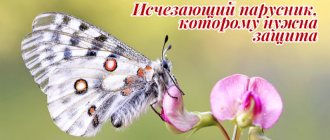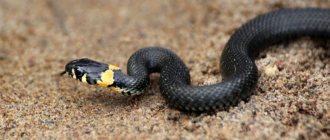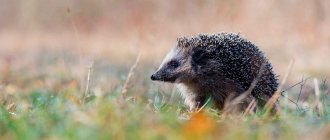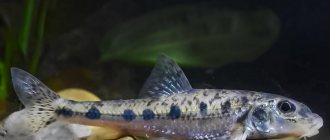The common or red-tailed boa constrictor is a very common pet snake. Boas can be easily purchased from a breeder, pet store, or reptile show, and can be identified by the red patterned coloring at the end of their tail.
Boas are native to Brazil and surrounding areas, where they spend time in tropical forests and lowlands, and although their habitat varies, they are considered moderately arboreal.
Behavior and temperament of boa constrictors
The boa constrictor grows between 2.5 and 3 meters in length and can weigh around 25 kg when fully grown. If well cared for, they will live 25 to 30 years in captivity and are large snakes for the average pet owner.
Before purchasing a boa constrictor, you need to seriously think about how strong they are, their size, the amount of food they eat, and their ability to constrict prey.
Why are pet boas so popular?
The reason pet boas are so popular is partly due to their typically docile nature. They are not usually aggressive snakes, but even if they are not upset, they can harm a person quite easily by squeezing (holding onto someone's arm, neck or arm) or biting you if they think your hand is their food.
Imperial boa (lat. Constrictor imperator)
In nature, the Imperial Boa lives mainly in Central America and the northern part of South America. Lives in forests and bushes along river banks, as well as in dry woodlands in the middle mountain zone. The imperial boa constrictor is a calm, phlegmatic animal, easily becomes tame, and does not bite unless it is hungry. This is a massive snake, growing in captivity to approximately 2.5 m in 10 years of life. We propose to arrange the terrarium in such a way that it becomes a “corner of wild nature”, a decoration for your home or office. Remember that a properly equipped terrarium is the key to the health and full life of your pet.
Content. You can purchase a ready-made terrarium set “Tropical Forest” (“Habitat kit”), which includes all the necessary accessories (glass terrarium, Compact Top lamp, ornamental plants, tropical liana, Plantationsoil coconut substrate, drinking bowl, thermometer and hygrometer). They are also kept in spacious horizontal glass “Terrariums” or mesh terrariums from 60 cm in length. All glass terrariums have a unique patented ventilation system. Mesh terrariums “Screen terrarium” (made of metal mesh), “Flexarium” (made of durable nylon mesh) are good because they transmit solar ultraviolet radiation, they have improved ventilation and are much lighter than glass ones. In addition, they are produced folding and take up little space when folded. A young boa constrictor can be transported in a small carrier “Faunarium”, “BreedingBox”. To avoid troubles associated with people’s inattention, it is better to close the terrarium with a “Lock” lock. Even a small crack is enough for the snake to escape.
The terrarium should have a Jungle Vines or a convenient strong branch on which the snake can move. You can decorate the terrarium with artificial plants, which, in addition to their decorative function, provide shelter; the snake can use them to climb up the terrarium, and they retain moisture after spraying.
Boa constrictors need a “SnakeCave” shelter (the set includes some sphagnum moss) or “RockOutcrops” (which is an element of decoration), which can also serve as a wet chamber. Snakes need such shelter in order to shed properly. After each shedding, be sure to check the eyes. If they have not shed, then carefully remove the old shedding. The optimal temperature is from 25 to 32°C during the day and about 20°C at night. You can measure the temperature using a thermometer located inside the terrarium. Thermometers are available in 3 types: mechanical, electronic and liquid crystal. It is better to use lower heating; upper heating can irritate the animal. As bottom heating, you can use a HeatWave thermal mat, a HeatWaveRock hot stone, or a thermal cord. For overhead heating, special infrared heating “HeatGlo” and ceramic “HeatWaveLamp” lamps are produced. If you have a glass terrarium with a height of 1.2 m or higher, then it can be illuminated with a specially designed SolarGlo mercury lamp. This one lamp provides ultraviolet A and B, infrared and daylight spectrum. Heating lamps must be placed in protective lampshades with a ceramic cartridge “WireLight” (wire lampshade), “Glowlight” (closed lampshade with a reflector that glows after the lamp is turned off) so that the animal does not receive burns from heating lamps. "WireLight" was specially designed for the safe use of "SolarGlo".
It is very important to create a temperature gradient. The terrarium should be divided into two zones: “hot” and “cold”. The shelter and pond are located in the “cold” zone of the terrarium. The pet should have the opportunity to choose the optimal living conditions at the moment. Both insufficient heating and overheating of the animal are dangerous.
The spectrum of the irradiated light and the duration of daylight hours matter. A line of “ReptiGlo” fluorescent lamps has been developed, which contain a certain proportion of ultraviolet B in their spectrum. There are 3 types of lamps: “Repti Glo 2.0” (2% UVB), “Repti Glo 5.0” (5% UVB), “Repti Glo 10.0” (10% UVB). When using lamps, it is very important to maintain a “working” distance between the animal and the ultraviolet source. “Lamp Repti Glo 5.0” is effective at a distance of up to 30cm, “Repti Glo 10.0” – up to 60cm. We recommend using Repti Glo 10.0 when the distance from the lamps to the animals exceeds 30 centimeters, or when the lamps are located behind a ventilation grille. The duration of daylight, daytime heaters and ultraviolet lamps should be 12 hours. Ultraviolet light burns out over time, so the lamp must be replaced after 6 months of operation.
It is recommended to combine fluorescent lamps containing a high proportion of ultraviolet B (Repti Glo 5.0 and 10.0) with a visible sunlight lamp (Repti Glo 2.0) to achieve the best results - a high degree of illumination of the terrarium and irradiation of the terrarium animals with ultraviolet light. Fluorescent lamps are installed in external reflectors “CompactTop” (for a regular socket), “DualTop” (for a T8 socket), “LightUnit” (a holder for T8 lamps).
For imperial boas, it is necessary to maintain a low humidity level of 30-50% if the terrarium has a shelter (burrow or cave) with a high humidity level. You can measure the humidity level using a special device, a “Hygrometer” hygrometer, which are available mechanical and electronic. The terrarium should be sprayed with warm water twice a day, and the sphagnum should be kept moist at all times.
Over-watering the terrarium is very harmful, because... this threatens the appearance of parasites in the litter and on the animal, for example, ticks. Snakes willingly burrow into the ground. The height of the soil should be about 6-10 cm. We recommend using one of the proposed options for a tropical terrarium: dry sphagnum moss “ForestMoss”; natural tree bark “ForestBark”, “JungleEarth”; or coconut substrate “PlantationSoil”, “CocoHusk”. A reservoir in which the animal can fit completely must be in a terrarium. We recommend using the WaterDish drinker, which is designed specifically for terrarium animals. The advantages of this reservoir are that it has the appearance of natural stone, is made of natural resin, is quite heavy and will not be overturned by the inhabitants of the terrarium. The water in the reservoir must be changed daily. Boas need wintering. It lasts from 2 to 3 months at a temperature of 18 ° C and a daylight hours of 6-8 hours.
Feeding: In captivity, it readily consumes mice, small rats, hamsters and chickens. Vitamins (ExoTerra "Electrolyte"; Tetra "ReptoLife", "ReptoSol") and mineral supplements (ExoTerra "Calcium"; Tetra "ReptoCal") should be sprinkled or dripped directly onto the fur of the food animal.
Snakes are fed approximately once every five days (after the snake has digested previous food).
Be attentive to your pet - this is the key to its successful maintenance. Life expectancy is about 30 years.
How to make housing for a pet boa constrictor?
A three-meter snake needs a lot of space to move around, but it usually doesn't like to stretch out to its full length. Snakes feel safer when they are hiding under something and can curl up.
If they are completely unwound, it is usually a sign that they are feeling vulnerable and threatened. An enclosure that provides 2 to 3 meters of floor space, a couple of feet in height and a couple of feet in width is large enough for an adult red-tailed boa.
How to make a terrarium for a boa constrictor safe?
Perhaps the most important thing about a pet boa constrictor enclosure is how safe it should be for you.
All snakes are able to escape and push themselves through open lids and squeeze through small holes.
Therefore, all snake enclosures should have locks or latches to prevent escape, which can be dangerous for both the snake and the people living in the house.
How to transport or carry a boa constrictor?
Placing the boa constrictor in a pillowcase with drawstrings works well for transporting or holding them temporarily while cleaning the enclosure.
What should you consider in a terrarium for a boa constrictor?
Since boas come from tropical environments, ease of maintaining humidity levels should be considered when setting up a terrarium.
Glass or plexiglass sides and covers help maintain higher humidity in the room, but you need to make sure that there is still enough air circulating inside and that nothing is melted by heating devices.
How to make a swimming pool for a boa constrictor?
Your snake needs a large, sturdy bowl of water. The boa constrictor should fit easily in this basin.
How to make a shelter for a pet boa constrictor?
Boas should also have a shelter or place to get out of the heat and curl up in a quiet, secluded area whenever they want.
Many owners use wooden or cardboard boxes and replace or clean them as needed. Tree branches may or may not be used by your snake.
What kind of bedding is needed for a pet boa constrictor?
The type of bedding you choose for your snake should be easy to clean, as a large snake will produce quite a large amount of waste.
Paper towels are great for young red boas, and reptile cage carpet or indoor/outdoor carpet cut into removable pieces is easy to clean when you have an adult snake.
Other materials that are often used include reptile bark, reptile mud mixtures, and other natural flooring materials.
Sand is not suitable for pet boas; they may swallow it, causing digestive problems.
Feeding
The diet of boas is no different from the taste preferences of other species of snakes. In their natural environment, boa prefer various small animals:
- mammals - rodents, small monkeys;
- birds;
- very rarely, but sometimes they attack lizards, such as iguanas.
When feeding a captive imperial boa, you should pay attention to its size. Large snakes will happily feast on rabbits, quail, chickens and guinea pigs. Boas of any size will not refuse small rodents: mice, rats and hamsters.
In order for the snake to develop well and not remain hungry, you need to follow the correct diet:
- Adult snakes are fed once every eight to ten days. One serving consists of seven to eight adult rats weighing two hundred to three hundred grams.
- Young individuals are given one to three adult mice or two rat pups weighing forty to sixty grams once every five days.
- Newborn snakes should be given small mice or rats.
Imperial boas drink water, so it should be changed frequently in the pool and drinking bowl.
Your pet requires vitamin and mineral supplements. Along with the food, give him crushed eggshells and complexes containing calcium.
Boas have a delicate digestive tract. Overheating or extreme cold, feeding too often or the rodent being too large can trigger regurgitation. Boas take a very long time to recover from this process.
Lighting and heating for a house boa constrictor
Since red-tailed boas are native to Brazil, they enjoy warm habitats. The bathtub should be maintained at a temperature of 32 to 35 degrees C using heat lamps or other means.
But avoid using hot stones because they can cause thermal burns to the snake. The rest of the tank may be above 26 degrees.
Heat lanterns, ceramic heat emitters, tank heaters, and hatchery cages are all acceptable means of heating a snake cage. Just make sure your snake can't reach the heating element and get burned.
UVB lighting is not necessary for a red-tailed boa, but if you want to offer extra white light during the day, UVB light is a great option. It may even help stimulate appetite, reduce stress, and make your snake happier and more active.
What to feed your pet boa constrictor?
Young boas will eat fuzzies, then mice, then rats, and when they become adults they will eat rabbits and large rats.
Whether you should kill your prey before feeding it to the snake is a matter of debate and is entirely your choice. It is advisable to feed the snake in an enclosure used only for feeding.
Is it possible to feed a boa constrictor in its terrarium?
Don't feed your snake in a regular cage; this will reduce the chance of the snake thinking you are food and accidentally biting you or ingesting the substrate.
The feeding container should be covered with a towel during feeding to provide a sense of security for your snake, or you can place the snake skin box in the feeding container while feeding.
Nutrition
Feeding boas in captivity is usually not difficult. They readily eat any rodents and birds of suitable size. They begin to take defrosted food quite easily. But you should be careful when feeding, especially when feeding young animals. Boas have a rather delicate digestive tract, and too often feeding or a large food object, as well as underheating or overheating can provoke regurgitation, which is extremely undesirable for snakes, since the recovery of a boa constrictor after a regurgitation is a very difficult task and it is not always successful. This is probably the only weak point in keeping ordinary boa constrictors.
Author: SS (Sergey), original on the website: www.myreptile.ru
What do domestic boa constrictors get sick of?
The most serious disease that can affect boas is inclusion bodies or IBD. 2 It is a deadly retrovirus similar to HIV in humans.
This virus can lie dormant for many years before the snake shows any signs of illness. This disease can be transmitted from snake to snake through ticks carrying infected body fluids. This is why it is recommended to keep multiple snakes separately if possible.
IBD is characterized by poor appetite and excessive salivation, and in severe or more advanced cases, IBD causes snakes to lose control of their body movements.
Boas are also susceptible to respiratory infections, marked by wheezing and nasal discharge.
Foamy discharge from a snake's mouth usually indicates pneumonia, which requires immediate treatment.
Scaly rot and blisters are common in boa constrictors, with both usually caused by unsanitary conditions.
Blister disease can appear as burns on the snake's skin and is usually caused by overheated cells or lack of moisture.
All of these ailments should be treated by a veterinarian who specializes in reptiles.
Breeding
Sexual maturity in imperial boas usually occurs in the third or fourth year of life. Although, sometimes mature individuals aged one year and seven months are found.
This species is ovoviviparous, that is, baby snakes are born in eggs with a very soft shell, immediately tear it and crawl out. Not all snakes manage to do this manipulation, so when breeding boas at home, you can help the kids and tear the egg shell yourself.
Pregnancy in females lasts approximately five to seven months. In the third month of pregnancy, expectant mothers often refuse food and do not eat until the birth. Depending on her age and size, the female gives birth to from seven to sixty cubs. Small boas are born with a bile sac and an umbilical cord; it falls off on its own within two to five days.
Newborn snakes look inactive and weak, but everything will change in a couple of days. The cubs will begin to actively move and even defend themselves by lunging and trying to bite. Then, within two weeks, the babies moult and begin feeding on their own.
Breeding imperial boas in captivity is quite a challenging activity. The fact is that among breeders and terrarium keepers there is still no clear and uniform opinion on what determines the desire of snakes to mate and how to effectively push them to do so. At the moment, there are several ways to induce snakes to mate. Some of them may work with your pets, but you should be prepared for the fact that none of the above methods will lead to the desired effect:
- For some snakes, it is enough to simply hibernate and then place different-sex individuals in one terrarium.
- Try adding another male to a couple that is not starting to mate; in some cases, you will be able to speed up this process.
- There are cases when, when atmospheric pressure dropped, boas began to mate.
- You can try to simulate the beginning of the tropical rainy season. To do this, you will need to frequently spray the terrarium in which the opposite-sex couple lives with a spray bottle.
Also, many researchers offered the public for consideration such cases when a deliberately rude attitude towards a male motivated him to proceed to reproduction. Some males, after emerging from hibernation, simply ignore the female, but after she molts, they suddenly have a desire to mate with her.
Some scientists have even tried to find a relationship between the desire of imperial boas to mate and the phases of the lunar calendar. Unfortunately, none of the studies have yet produced the desired results. For terrarium science, it is still a mystery how to provoke snakes to reproduce and why methods that worked on some individuals no longer work on other boas of the same species.
